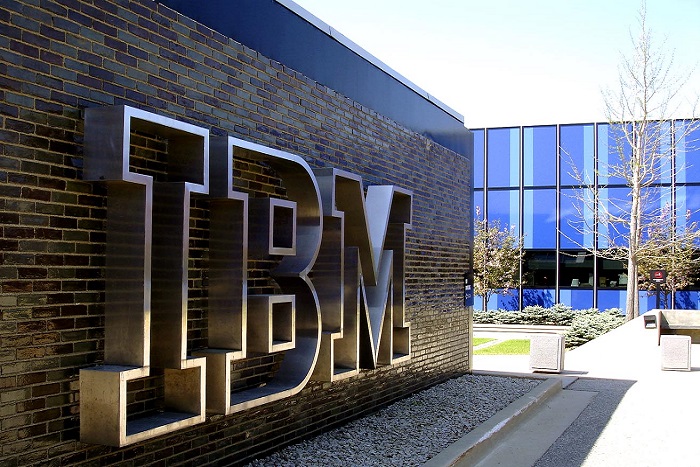Technology
IBM’s Telum II: How IBM’s New Chip Powers Smarter Operations

- IBM’s Telum II processor enhances AI capabilities in mainframe systems, benefiting industries like banking, insurance, and retail.
- The new chip, developed with Samsung’s 5nm technology, significantly boosts processing power for complex AI models and large datasets.
- While valuable for IBM’s mainframe users, the Telum II is unlikely to impact the broader AI market dominated by companies like Nvidia and AMD.
IBM has introduced its latest innovation, the Telum II processor, a significant update intended to boost AI capabilities in its powerful mainframe systems. This discovery has the potential to significantly help businesses that continue to rely largely on IBM technology, such as banking, insurance, and retail, by allowing smarter and faster operations in an increasingly AI-driven environment.
What Telum II Brings to The Table
The Telum II processor, shown at the Hot Chips 2024 conference in Palo Alto, California, demonstrates IBM’s commitment to keeping mainframes viable in the age of AI. This new processor, designed utilizing Samsung’s 5nm technology, has eight high-performance cores that run at an astonishing 5.5GHz. According to IBM, the Telum II features a “40% increase in on-chip cache capacity, with the virtual L3 and virtual L4 growing to 360MB and 2.88GB, respectively.”
One of the most noticeable improvements for AI applications is a fourfold increase in each accelerator’s speed, reaching “24 trillion operations per second (TOPS).” This enhanced processing power is critical for dealing with complicated AI models and massive datasets, which are becoming more widespread in today’s data-driven industry.
IBM’s announcement included the Spyre Accelerator, a new addition to its AI portfolio. This accelerator is equipped with 32 AI cores, comparable to those found in the Telum II processor. When connected to IBM’s Z systems via PCIe, the Spyre Accelerator could enhance AI processing capabilities, providing even more power to enterprises that must manage massive volumes of data quickly.
The Increasing Demand for AI Chips
The Telum II’s debut coincides with the AI chip market’s fast expansion. With AI becoming pervasive in applications ranging from chatbots to self-driving cars, demand for powerful AI processors has increased, surpassing supply. Companies such as Nvidia, AMD, and Intel have enjoyed sales growth as businesses throughout the world seek more computer capacity. Meanwhile, digital behemoths like Google, Amazon, and Microsoft are creating their own AI chips, boosting rivalry and propelling rapid progress in the sector.
According to experts, the AI chip revolution has the potential to have a significant impact on business. For example, merchants with advanced AI gear can now evaluate client behavior in real time, allowing them to better customize promotions and manage inventories. Financial institutions are rolling out sophisticated fraud detection systems capable of processing millions of transactions every second, potentially saving billions of dollars in damages. Similarly, supply chain managers use AI to forecast disruptions and optimize routes, resulting in cost savings and increased efficiency.
A Strategic Move for Mainframe Users
While the Telum II and Spyre Accelerator are impressive improvements, they are unlikely to shake up the overall AI business. Dev Nag, the CEO of QueryPal, warns against overhyping the announcement. “These are not general-purpose AI chips that will compete directly with NVIDIA’s GPUs or similar offerings from AMD,” Nag told me. He underlined that these advancements are unlikely to be adopted by cloud vendors or become widely used outside of IBM’s core mainframe customer base.
For firms that still rely on IBM mainframes, this new microprocessor provides a chance to upgrade without requiring a major system redesign. Mainframes, while generally considered outdated, continue to play an important role in industries such as finance, insurance, and retail, where their dependability, security, and ability to manage huge transaction volumes are highly desired.
IBM’s objective with the Telum II is to improve existing systems rather than revolutionize AI computing. The company’s proposed “ensemble method of AI” may provide distinct advantages for particular industries. According to IBM: “Using ensemble AI leverages the strength of multiple AI models to improve overall performance and accuracy of a prediction as compared to individual models.” For example, in fraud detection, standard neural networks can provide an initial risk assessment, whereas large language models (LLMs) improve accuracy and performance.
Keeping Mainframes in The Game
IBM’s recent announcement demonstrates a strong commitment to keeping its mainframe clients competitive in an AI-dominated world. Businesses that integrate advanced AI into their systems can continue to rely on their existing infrastructure while benefiting from new technological breakthroughs.
“Infusing AI into enterprise transactions has become essential for many of our clients’ workloads,” IBM noted in its announcement. The company also highlighted the practical benefits of these innovations, stating that its “AI-driven fraud detection solutions are designed to save clients millions of dollars annually.”
However, as Nag mentioned, this idea has its limitations. While IBM mainframes continue to be important in certain industries, particularly among the Fortune 500, they represent a small portion of the overall enterprise computing industry. Despite the advancements, Nvidia GPUs still generate more income than all of IBM’s System Z mainframe sales combined.
To Conclude:
IBM’s Telum II processor is a huge step forward for mainframe customers, allowing them to incorporate cutting-edge AI into their operations without completely revamping their systems. However, while this breakthrough may benefit IBM’s existing customers, it is unlikely to upset the larger AI market, which is dominated by more adaptable and widely adopted AI chips from companies such as Nvidia and AMD. For those who still rely on IBM mainframes, this invention offers a path to modernization in an increasingly AI-focused world.

























































